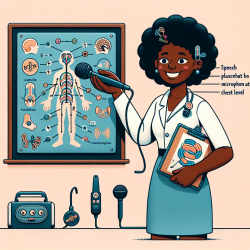Introduction
In the journey of adolescent development, mental health plays a pivotal role. The study titled "Adolescents’ Physical Activity and Depressive Symptoms: A Psychosocial Mechanism" published in the International Journal of Environmental Research and Public Health, sheds light on the profound impact of physical activity (PA) on depressive symptoms among adolescents. Utilizing the Theory of Planned Behavior (TPB), the research underscores the potential of PA as a tool for enhancing mental well-being.
The Power of Physical Activity
The findings of the study reveal a significant inverse relationship between physical activity and depressive symptoms. Adolescents who engage in moderate-to-vigorous physical activity (MVPA) exhibit fewer depressive symptoms, highlighting the protective effect of regular exercise. However, despite the known benefits, a staggering 77% of adolescents globally engage in insufficient PA, with less than one-third of Chinese adolescents meeting the recommended daily 60-minute MVPA.
Understanding the Theory of Planned Behavior
The Theory of Planned Behavior provides a framework for understanding the psychosocial mechanisms linking PA and mental health. The TPB suggests that attitudes toward behavior, subjective norms, and perceived behavioral control significantly influence PA intentions and behaviors. The study's path analysis supports this model, indicating that these TPB variables predict both PA behavior and depressive symptoms.
Implications for Practitioners
For practitioners working with adolescents, these findings offer actionable insights:
- Promote Positive Attitudes: Encourage adolescents to view physical activity as enjoyable and beneficial for their mental health.
- Leverage Social Influence: Utilize peer and family support to foster a supportive environment for PA participation.
- Enhance Perceived Control: Empower adolescents by providing them with the skills and confidence to engage in regular PA.
By integrating these strategies into intervention programs, practitioners can effectively address both physical inactivity and depressive symptoms in adolescents.
Encouraging Further Research
While this study provides valuable insights, it also highlights the need for further research. Future studies should explore the application of the TPB model across diverse cultural contexts and utilize objective measures of PA to enhance the validity of findings. Longitudinal studies could also provide deeper insights into the causal relationships between PA and mental health outcomes.
Conclusion
The study underscores the importance of physical activity as a crucial element in promoting adolescent mental health. By adopting a TPB-based approach, practitioners can design effective interventions that not only encourage PA participation but also contribute to the reduction of depressive symptoms. As we strive to create better outcomes for children, embracing data-driven strategies like these can lead to transformative changes in adolescent health.
To read the original research paper, please follow this link: Adolescents’ Physical Activity and Depressive Symptoms: A Psychosocial Mechanism.










